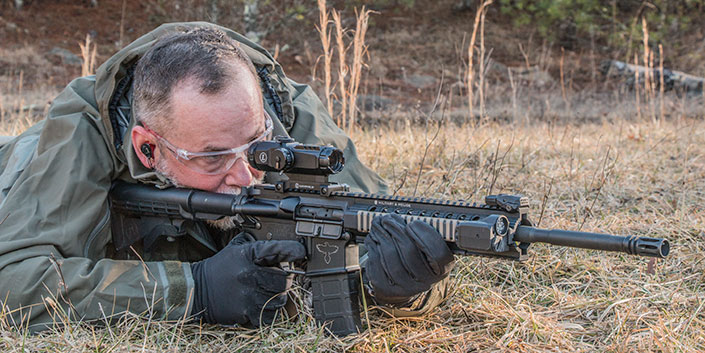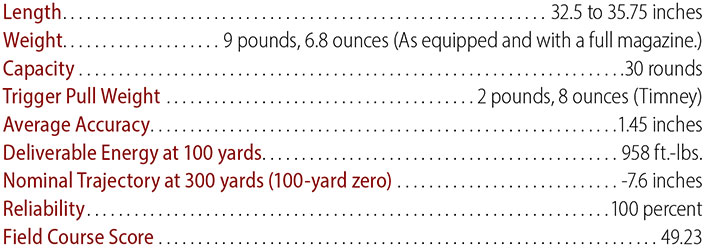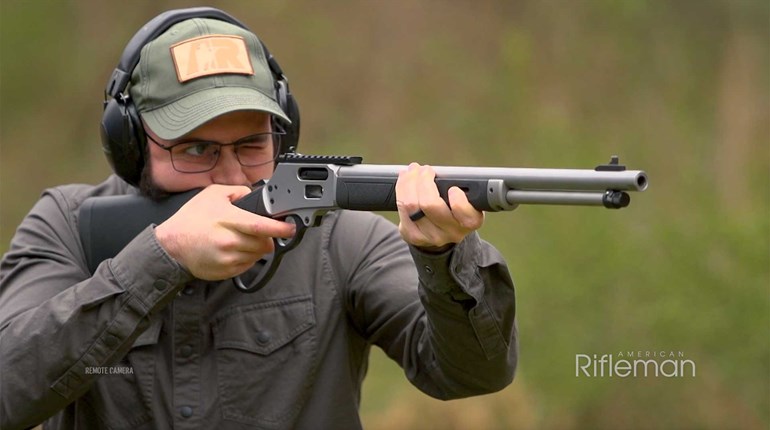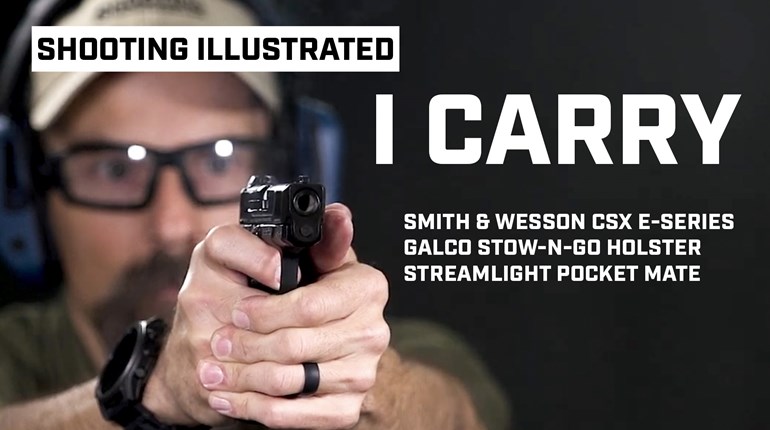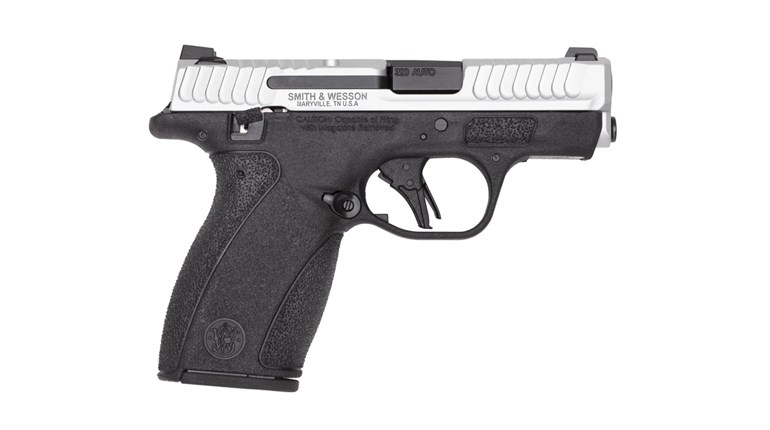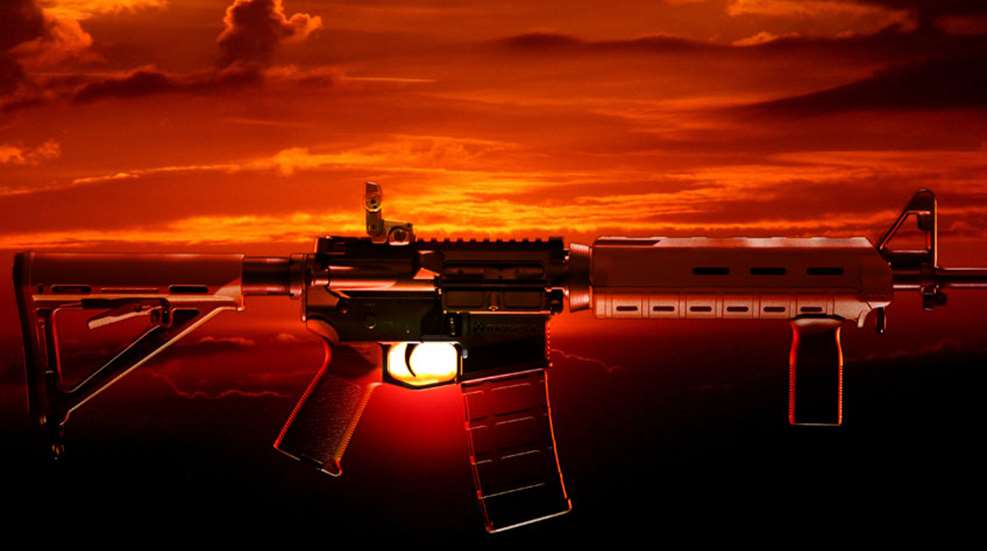
It’s been suggested that there are six primal pillars of the human brain: survival, safety, security, sustenance, sex and status. We live most of our lives between the last three, looking for good food, a good partner and recognition. When things go “Katrina,” we get Neanderthal, and suddenly the first four become the most important. It’s the moment for which preppers and survivalists plan, and part of that plan often includes a rifle.
Gunsite Academy founder Jeff Cooper said, “The rifle is a weapon…it is equally useful in securing meat for the table, destroying a group of enemies on the battlefield, and resisting tyranny.” But, there are all types of rifles—most of which are highly specialized. What’s called for here is a general-purpose rifle. Cooper also said, “…when we speak of a general purpose rifle, we refer to an instrument that will do a great many different jobs equally well…” Granted, cataclysmic conditions of ruin can run the gambit from a camping trip gone bad to total anarchy. Which rifle to choose is, therefore, the key question.
At one time, the lever-action was the standard arm of the American citizen. After World War I, it was supplanted by the bolt-action, and after World War II and Vietnam, the semi-automatic became the conventional answer. Our perception of a best option has changed; what was once considered ideal is now archaic and obsolete. Or is it? Again, according to Cooper, “The greatest single asset of the personal rifle, to my mind, is that it be ‘friendly.’” That’s precise, but also ambiguous advice. Given the parameters we’re dealing with, could we not narrow our choices to a couple of good options?
The Shootout
To find out, I selected four potentially doomsday-appropriate carbines, and explored their strengths and weaknesses in order to determine which was friendliest to me, with regard to fulfilling the role of a rifle ready for ruin. I have a collection of steel targets scattered along a three-quarter-mile walk on my property. By running the rifles through this course, I compared their friendliness and effectiveness. There were five stages, and at each I conducted a snap shot on a torso target and a precision shot on a 6-inch target. Engagement distance varied from 60 to 160 yards, and time stopped when both targets had been hit.
On stage one, I engaged the targets across-cab, while seated in a UTV. For stage two I exited the UTV, kneeled and used its hood for support. Stage three started standing, before engaging the targets from the prone position. For stage four, I moved from standing to sitting, and at the last stage, both shots were fired standing, using a tree for support. Ten hits were required to clean the course and scoring was simple. Both targets had to be hit to stop the clock at each stage. I added total shots fired to the total time, and the lower the number, the better the rifle and I performed. Additionally, three, three-shot groups were fired with each rifle from a sandbag rest at 100 yards. In total, 100 rounds were fired with each carbine.
Power
All four carbines are sufficient for dealing with human adversaries, but depending on your location, you might be fighting something else. One night, in the aftermath of Katrina, I found a team of unarmed Wackenhut security guards on top of their vehicles staying clear of a hungry Rottweiler. First thing they asked was, if I had a gun. Similarly, during a recent earthquake on Kodiak Island there was no looting, but like everyday on that rock, grizzly bears were a constant threat.
Also, the rifle we’re talking about needs to be able to supply food. In the southern United States deer and small game are plentiful and the .223 Rem. will suffice (but, may not be legally advisable). The farther north you go, the more power is needed. Yes, you can kill a moose with a .223 Rem. and proper shot placement, but the .308 Win. is a better option.
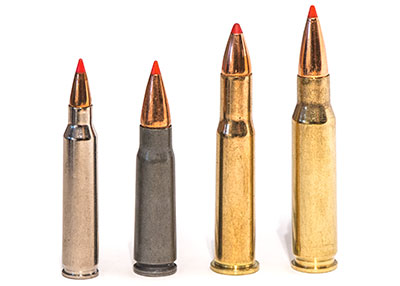
Ammunition
You’ll have to feed your rifle and this prompts many to select popular cartridges like those tested. Sustainment for months is unlikely, so being able to “pick up” ammo—while potentially important—is not a realistic necessity. What’s more important is how much ammo you can comfortably carry. So, lets look at how many rounds you’re getting per pound: .308 Win., 18; .30-30 Win., 21; 7.62x39 mm, 28 and .223 Rem., 38.
In General
Some points with each rifle—good and bad—are simply not reflected in the scores. The human fascination with numbers sometimes prevents us from seeing what might be more important.
Most notable was the inferiority of the red-dot sight. For snap-shooting it was fast, but hindered the ability to deliver precision shots with speed. This was partly due to the lack of magnification, but also due to the optic’s inability to deal with varied light conditions. On a pristine range these sights can work like magic; in the field—woods—they can be problematic. Had the AK been fitted with a magnified optic, it would likely have performed on par with the others. The red dot is also battery powered, which may not be wise for a rifle kept in storage until the world happens to fall apart.
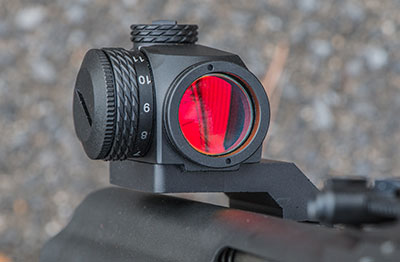
The semi-automatics are measurably faster when it comes to cycling speed. However, given actual target engagement times, the advantage is not as large as it might seem. Regardless of the action type, you must overcome recoil, get back on target and establish a good sight picture. Given the parameters of this exercise, for all practical purposes the AR-15 was no faster than the lever action. Of course, a different target configuration or array could have allowed the semi-autos to better leverage their advantage.
The main drawback with the lever gun was magazine capacity and slow loading. This was a 10-shot course, and the lever gun was the only carbine requiring any serious ammo consideration during the exercise. With the AK’s worst run, it took 15 shots to complete all five drills. That’s well within its 30-round capacity. However, the lever-action is the only carbine offering load-as-you-go operation; it’s easy to shoot one or two shots and shove one or two rounds in the tube. With the magazine-fed rifles, the magazine must be removed or replaced. During this process the rifle becomes a single shot. And then, too, what happens in the real world if you lose your magazine, or it becomes damaged?
Location, Location, Location
Your rifle for ruin should probably mostly depend on your location. If anarchy falls on you in a big city, portability and concealability are matters of concern. If you live in the Northwestern woods, power-on-target and reach would seem to be priority. For rural dwellers across most of America, a rifle that offers a balance of capacity and power might work best.
All these carbines are suited to the West Virginia hills where I live. They’re capable of handling the indigenous critters, shot distances here tend to be short to medium, and people aren’t easily spooked or numerous. There is no best answer for everyone and every circumstance. If you take power out of the equation, and if each rifle was equipped with similar optics and a good trigger, the person pulling that trigger will matter more than the gun. (It’s always been that way.) Pick a rifle that’s friendly to you and suits your needs.

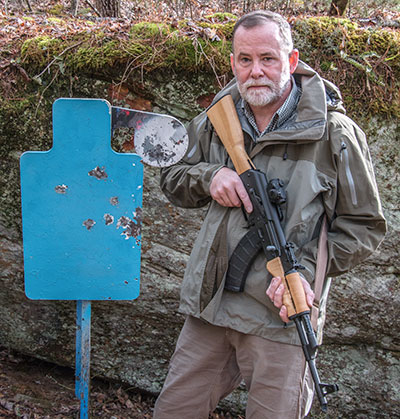
1. Century Arms RAS47, 7.62x39 mm
The AR/AK argument has existed since the ’50s. Some prefer the AK’s simplicity, reliability and larger caliber. The American-built, $799, Century Arms RAS47 was included for those prefer the creation of Mikhail Kalashnikov. It was fitted with a Red Army red-dot sight mount ($119.99) a Primary Arms Micro Dot sight ($89.99) and a Galco SLC strap ($30). Total retail value: $1,038.99.
This was the heaviest carbine considered, and though somewhat clunky and cumbersome, it performed well when snap shooting, arguably as good as any evaluated. The Primary Arms red-dot sight was measurably better than the coarse open sights, but the lack of magnification made precision shots challenging; in most instances it took more than one shot to get a hit. The trigger was slightly better than horrid, but it was manageable for survival situations, even with gloves.
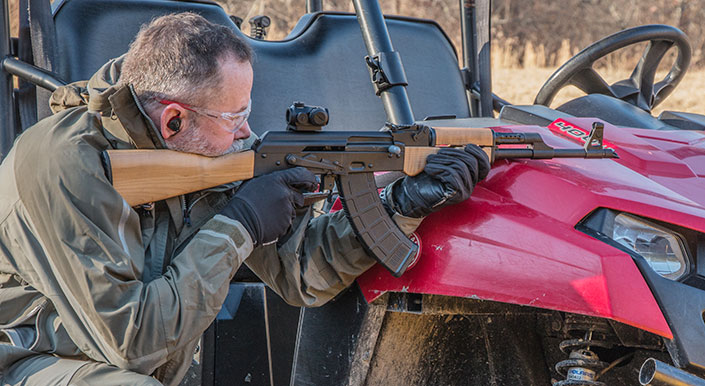
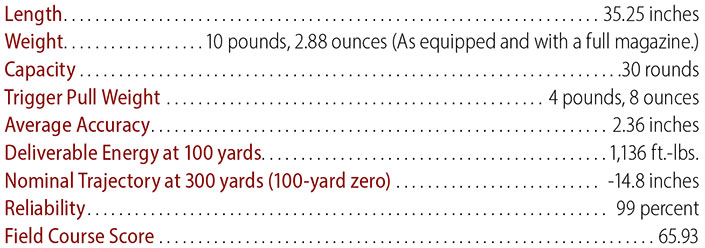

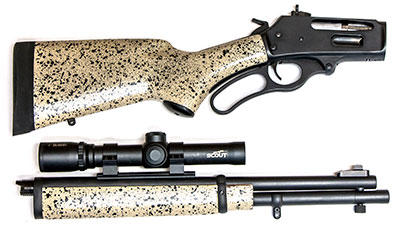
2. Marlin 336, .30-30 Win.
Archetypal of the iconic lever-action rifle Americans have relied on for more than a century, the Marlin 336 has been around for 70 years. New rifles can be had for about $500, but the test rifle was picked up at a pawnshop for the enormous sum of $165. I added an XS Sights front sight, scope bases and a used (and discontinued), compact, fixed-6X Weaver riflescope in quick-detach mounts and an XS Sights Low Weaver backup sight in case of optic failure. I also installed a cheap synthetic sling for a total investment of $337.
Given its limited capacity, the rifle must be loaded as you go, but it was the lightest carbine tested. No misses were recorded, and while the second shot did not come as fast as with a semi-automatic, it was not far behind. Six-power magnification is a bit much for snap shooting and dealing with up-close targets. Reliability was flawless, but a lever gun is not the easiest to cycle from the prone position, depending on how low to the ground you might be.
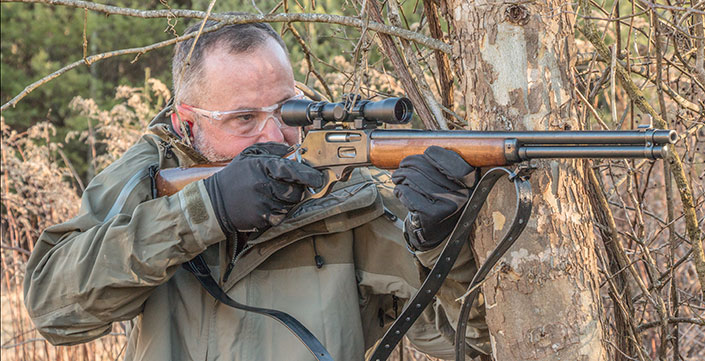
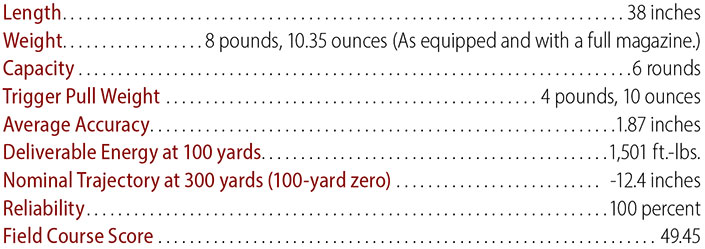

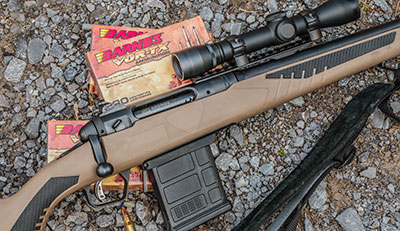
3. Savage 110 Scout, .308 Win.
Though emblematic of the modern Scout Rifle, Savage’s 110 Scout is a bit heavy with regard to Jeff Cooper’s conceptual 6.5 pounds. It offers the option to mount a scout scope or red-dot sight, and comes with an excellent set of backup sights. It has a threaded muzzle and feeds from detachable AICS magazines. I outfitted it with a Weaver 4X scout scope, a 10-round Magpul magazine, and a Galco RifleMann sling. Total cost at retail: $1,100.
The .308 Win. smacked the steel with a noted authority, but the bolt-action was the slowest to cycle. The 4X optic made precision shots easy and worked reasonably well for snap shooting. With the forward-mounted scout scope, the rifle was easy to carry at the balance point. It functioned flawlessly, and the new Savage AccuFit stock allowed for a perfect shooter interface.
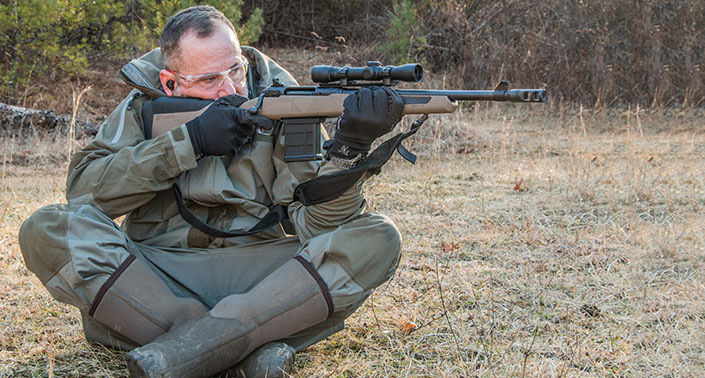
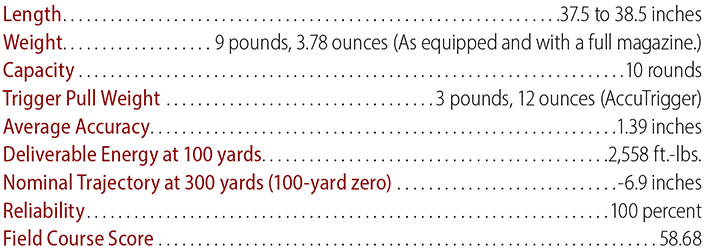

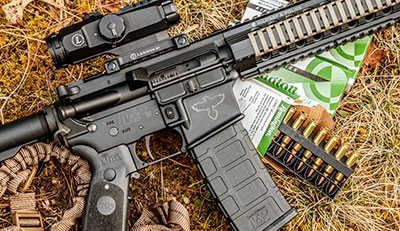
4. Smith & Wesson M&P 15, 5.56 NATO
Variations of the AR-15 are as diverse as craft beers. At the heart of what is known as the MSR is a carbine, fitted with a collapsible stock, threaded muzzle, backup sights and full-length optics rail. My well-used Smith & Wesson M&P 15T represents this class well. New, it retails for $1,189, but mine has a Timney trigger, a Leupold 4X HAMR sight, Crimson Trace LiNQ laser/light combination and a Galco Bungee sling. Many would argue that it is ideal for end-of-days duty. As outfitted, though, it’s not cheap. Cost: $3,268.16.
This rifle was 100-percent reliable and delivered the second-best precision. It made the field course easy, and the magnification helped a great deal on the precision shots. There were no misses and the rifle turned in the fastest overall time. The green laser was visible on every target, but the heavy reticle was more than sufficient, even in heavily shadowed woods. I can’t say enough about the trigger and you should not underestimate the importance of a good one. You get what you pay for.
